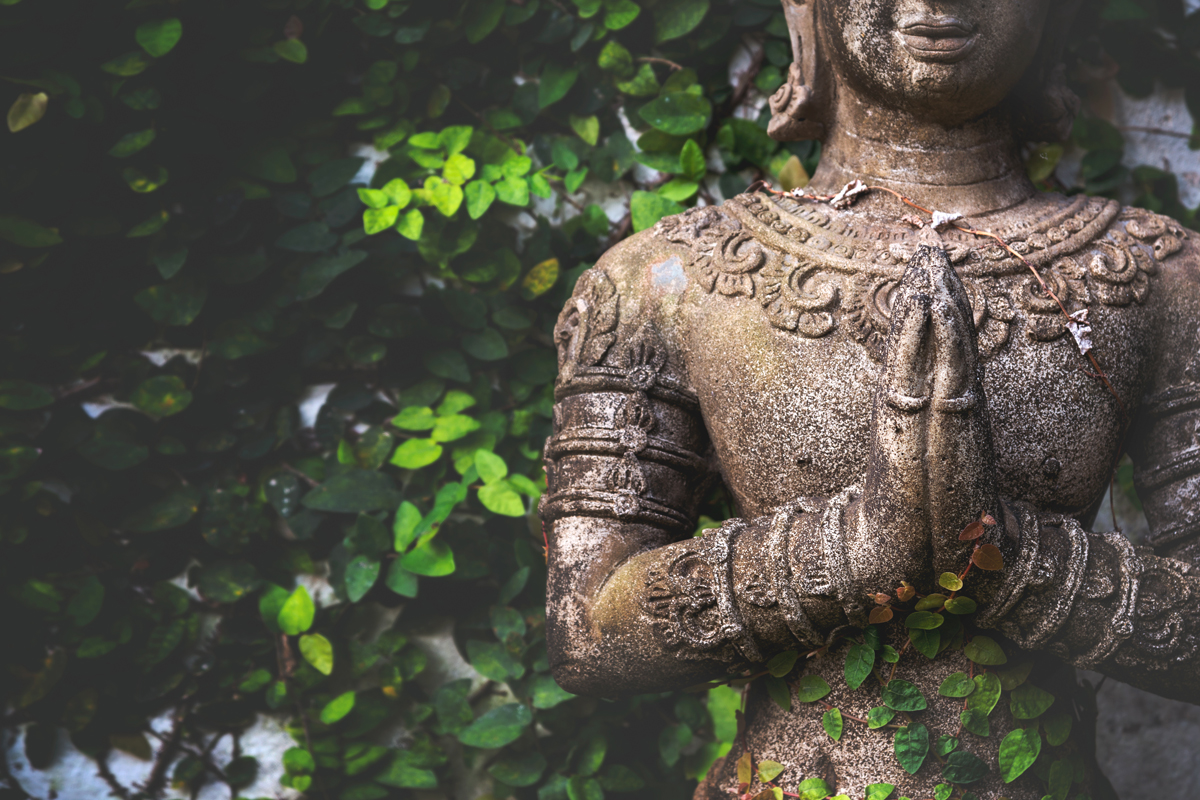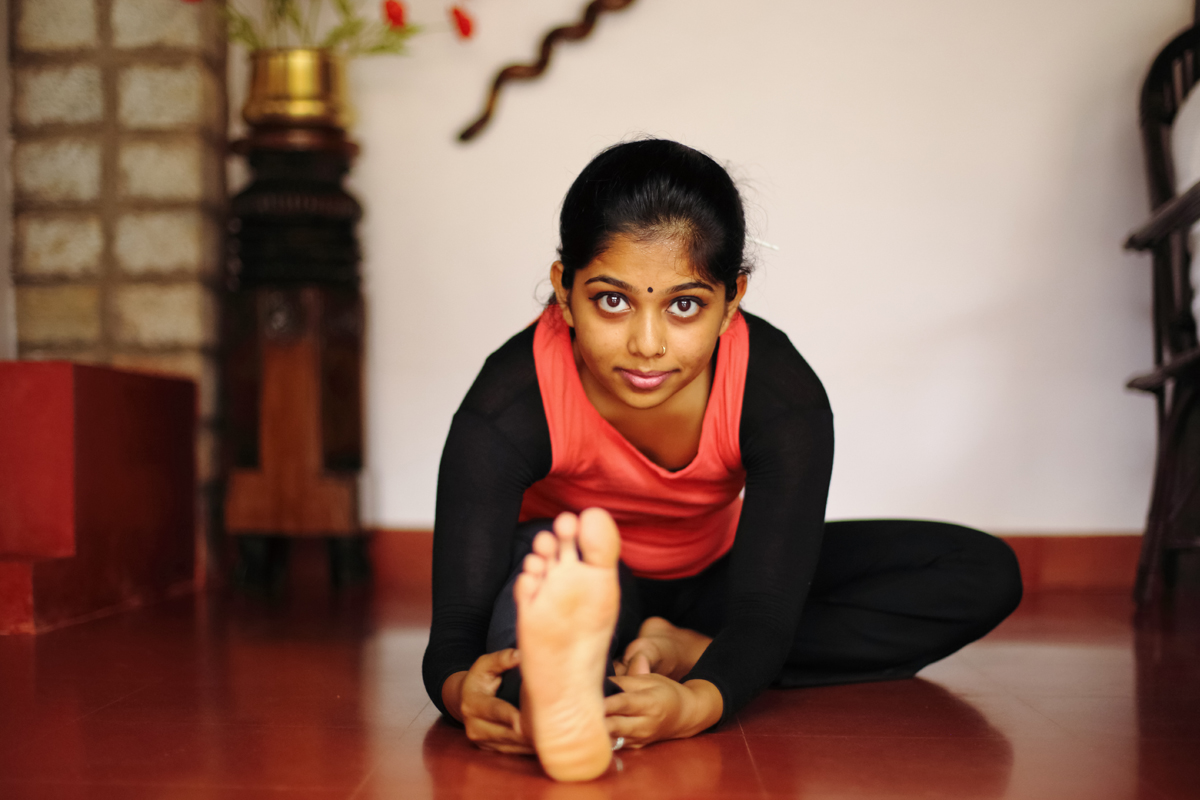Cultural Appropriation in Yoga
In this practice intended to heal, are we inadvertently causing harm?

Yoga teachers will already be well aware that the yamas are one of the eight limbs of yoga. According to Patanjali’s Yoga Sutras, the word yamas can be translated as “abstinences”; in other words, these are things yogis should avoid doing (Satchidananda 2012).
The first of the yamas—and possibly the best known—is ahimsa, which translates to “nonviolence.” Some connotations of this term are obvious; for example, people should not physically harm others. But ahimsa is a more nuanced principle that refers to all kinds of harm, including mental, emotional and spiritual. Yogis are tasked with living in a manner that avoids harming sentient beings in any way.
The notion that we are not to cause harm feels like common sense. You are unlikely to find a yoga practitioner who consciously rejects the notion of ahimsa as a principle. However, is it possible that the way yoga is practiced and taught by some teachers is unwittingly propagating harm? Is cultural appropriation a concern in some yoga settings? If so, what can we, as mind-body practitioners, do about it?
What Is Cultural Appropriation?
Cultural appropriation is the act of adopting elements such as knowledge, practices and symbols from another, often minority, culture without understanding or respecting the original culture and the context in which those elements have traditionally been taught or applied.
We are beginning to hear the term a lot—whether in debates over Halloween costumes or expressions of frustration when people casually adopt clothing or hairstyles of those from other cultures.
Borrowing Versus Appropriation

For many of us, the concept of cultural appropriation is confusing, and globalization has only served to muddy the waters. Is borrowing okay—or not? “Borrowing and cultural mixture are widespread . . . . Cultural boundaries are fluid and shifting,” says Olufunmilayo B. Arewa, PhD, a professor of law and anthropology at the University of California, Irvine (Arewa 2017).
And, in fact, physical yoga postures, or asanas—particularly as they are understood in the West—are the result of a blending of cultural influences. While researching yoga’s roots, Mark Singleton, PhD, author of Yoga Body: The Origins of Modern Posture Practice (Oxford University Press 2010), discovered “that asana was rarely, if ever, the primary feature of the significant yoga traditions in India” (Singleton 2011).
According to Singleton’s research, yoga asanas like those we know today were designed by Krishnamacharya, who taught such notable yoga leaders as B.K.S. Iyenger, Indra Devi and T.K.V. Desikachar. The system Krishnamacharya created was “a marriage of hatha yoga, wrestling exercises, and modern Western gymnastics” that “eventually grew into several contemporary styles of asana practice, most notably what is known today as Ashtanga vinyasa yoga” (Singleton 2011).
Given that this type of yoga is itself a mix of cultures, why are some people worried that yoga is being culturally appropriated? Where do we draw the line between the natural blending of cultural boundaries and the harmful act of cultural appropriation? “Distinguishing borrowing from appropriation can sometimes be challenging because context plays a critical role in delineating acts of borrowing from appropriation,” says Arewa.
Rina Deshpande, MA, a yoga teacher, researcher and writer in New York City, makes the following distinction: “Cultural appropriation is when borrowing and sharing between cultures becomes exploitation. It’s cherry-picking what looks cool in a cultural practice without learning and acknowledging its complex history” (Deshpande 2017). So, while a certain degree of borrowing between cultures is natural and can even be celebrated, context, respect and acknowledgment are key.
Good Intentions, Bad Practices

It is important to note that most yoga teachers have good intentions and are probably unaware of the issue of cultural appropriation in yoga. But this lack of awareness can add another layer of confusion, especially considering that both “students and teachers [likely don’t know] how certain words and actions can mar the religious or spiritual significance of yoga” (Deshpande 2017).
Identifying specific aspects of yoga practice that constitute cultural appropriation is challenging. It’s more about taking the cultural origins out of context or adopting authentic yoga practices and related items and using them or marketing them without an attitude of respect.
Some are troubled by the misconception that yoga is an exclusionary practice, accessible only to those with certain body types. Others find it problematic when people perpetuate the notion that you can do yoga only if you’re wearing luxury yoga clothes or practicing at an elite facility.
So, what are the potential causes of appropriation?
A DIFFERENT TYPE OF TEACHER TRAINING
Michele Hébert, co-founder of the Raja Yoga Institute, believes that the problem of cultural appropriation in the West may have started when certifying organizations began training teachers. While Hébert sees this education as an honest attempt to provide standards for yoga teaching, she believes that yoga traditions have been lost along the way.
Speaking with Fitness Journal, Deshpande adds that, originally, “yoga was something passed down through a devoted teacher who carried years of practice and depth of knowledge.” Hébert explains that “the teacher-student relationship was more like an internship . . . [that] often took several years because, in the teaching, there was also a transference of energy, allowing the student to grow in spiritual strength and stature.”
It would appear that some of the all-important context—a key to avoiding cultural appropriation—can be lost when yoga teachers are trained in “2-week to 3-month teacher-training programs [that] do not allow for this development,” says Hébert.
EXTREME COMMERCIALIZATION OF YOGA
While everything gets commercialized to a degree, the issue lies in moving completely away from yoga’s mind-body-spirit connection and monetizing the practice’s spiritual values and symbols. For example, there can be a problem with “modifying yoga to [conform to] the values of Western lifestyle, such as how one looks in yoga,” says Lawrence Biscontini, MA, mindful movement specialist and an award-winning group exercise instructor. “The fact that there is a fashion to yoga clothes is insensitive. Plus, the phrase ‘nama-stay in bed’ appears everywhere these days. It bastardizes the traditional meaning of a sacred word with several connotations and denotations.”
The underlying problem is not that aspects of yoga have been adopted into regular life, but rather, that they are being adopted without respect for the original intention.
IGNORING PAIN
It is not unusual for cultures to intermix, borrow and reinvent. However, it’s inappropriate when this natural borrowing turns to stealing without regard for the personal pain that people of the given culture may have experienced. “It’s clear that many people don’t realize the suffering that India went through under British colonization, where practices like yoga were suddenly regulated or oppressed by people who came from a different land,” says Deshpande.
Proceeding with a Westernized practice without considering the pain that many have experienced is problematic. “Yoga has a really complex, painful past for the people who originally created it,” says Deshpande. “It’s similar to how we ought to feel when we consider Native Americans and their practices and what’s happened to their community. There is fracturing, stealing and pain.” To facilitate space for healing in our yoga classes, we must be willing to acknowledge a difficult truth.
What Can Yoga Teachers Do?

While the problem of cultural appropriation can be confusing and disheartening, we can bring about positive change. Reflect on these suggestions:
ASK QUESTIONS
“Consider if there is harm being done through neglect, suppression or shaming [of] the values of another culture,” says Deshpande. We need to ask challenging questions—and be willing to hear the answers.
LISTEN
It can be difficult to learn that the way we are doing something—no matter how well-intentioned—is hurtful. But one of the best things we can do is to listen and be receptive to what we hear. Deshpande says yoga is more than just a beautiful experience: “[It’s also about] touching a painful history to show how much we value and understand the yoga that we choose to practice.”
EDUCATE
We have a wonderful platform, not only for facilitating personal change in yoga, but also for educating our students. Biscontini suggests we “weave into educational cuing some historical or cultural focus for [the day’s] practice, like one of our eight limbs of yoga, and how a pose can be a metaphor for what happens in our lives off of our mat.”
ADJUST
If you discover that something in your approach to yoga or yoga culture is harmful, don’t be afraid to make changes. When you choose yoga apparel that depicts a deity or symbol, consider what it represents, recommends Deshpande (2017). This doesn’t mean not wearing this type of apparel altogether, but it does mean considering the message with which you’re aligning yourself.
MEDITATE
One of the professed goals of many seasoned yoga practitioners and teachers is to connect with something beyond themselves. Whenever you’re at a loss for answers, turn to meditation for increased clarity. “If every yoga instructor had a regular personal meditation practice, the concept of cultural appropriation would not exist,” says Hébert. “We would all be connected to pure consciousness, which is the ultimate goal of yoga.”
Recommended Reading
Would you like further insights into this topic? Try these resources:
-
- Borrowed Power: Essays on Cultural Appropriation, edited by Bruce Ziff (Rutgers University Press 1997)
-
- The Ethics of Cultural Appropriation, edited by James O. Young and Conrad G. Brunk (Wiley-Blackwell 2012)
-
- Roots of Yoga, translated and edited by Sir James Mallinson and Mark Singleton (Penguin 2017)
-
- Selling Yoga: From Counterculture to Pop Culture, by Andrea R. Jain (Oxford University Press 2014)
- Yoga Body: The Origins of Modern Posture Practice, by Mark Singleton (Oxford University Press 2010)
References
Arewa, O.B. 2017. Love, hate, and culture wars. Phi Kappa Phi Forum, 97 (1), 26–29.
Deshpande, R. 2017. Yoga in America often exploits my culture—but you may not even realize it. Self Magazine. Accessed June 25, 2019: self.com/story/yoga-indian-cultural-appropriation.
Satchidananda, S.S. 2012. The Yoga Sutras of Patanjali. Buckingham, VA: Integral Yoga Publications.
Singleton, M. 2011. The ancient & modern roots of yoga. Yoga Journal. Accessed June 26, 2019: yogajournal.com/yoga-101/yoga-s-greater-truth.
Lisa Quigley
Lisa Quigley is the Publications Assistant at IDEA Health & Fitness Association. She considers herself first and foremost a writer. Her love of words and stories inspired her to pursue a degree in English and continue on to receive an MFA in Creative Writing.
During her academic pursuits, Lisa also discovered yoga. Her personal practice was so powerfully transforming that she decided to become a yoga teacher. In 2012, she was certified at the 200 hour level. She spent the next three years teaching at multiple yoga studios throughout San Diego County. As a yoga teacher, she seeks to encourage people to love and accept themselves as they areÔÇöwhile at the same time welcoming opportunities for growthÔÇöso they can feel more at home in their bodies and lead more fulfilling lives.
The position at IDEA Health & Fitness Association allows Lisa to combine all of her interests in one place. She is thrilled to be part of a company who's mission aligns so closely with her own vision and values.





